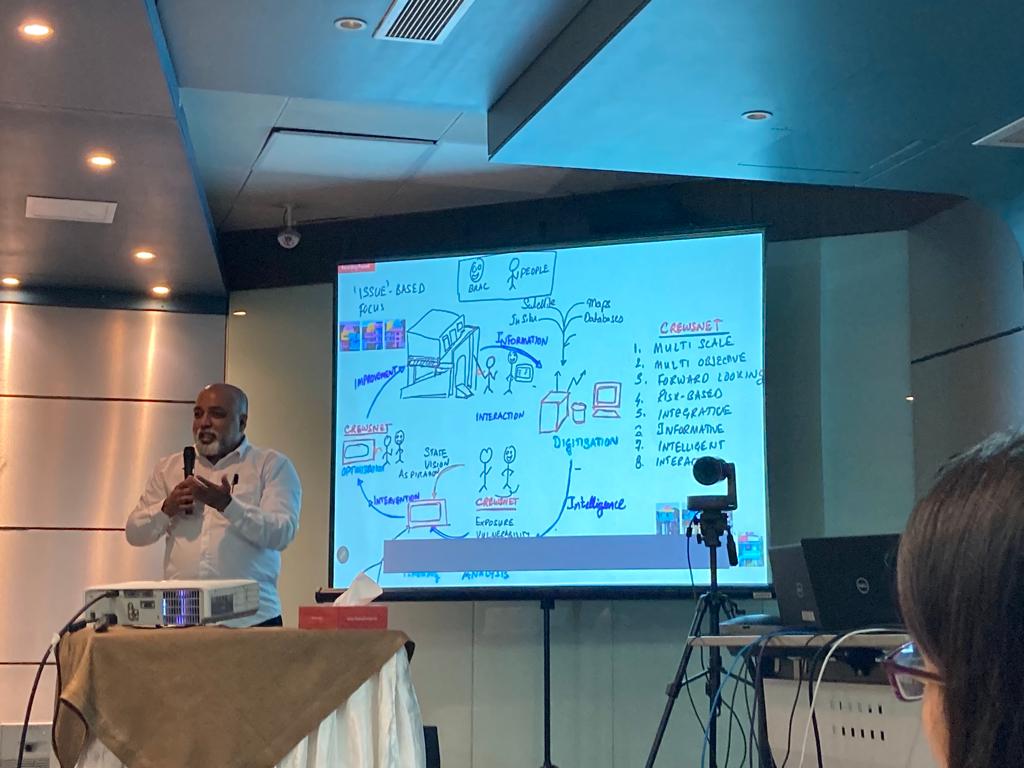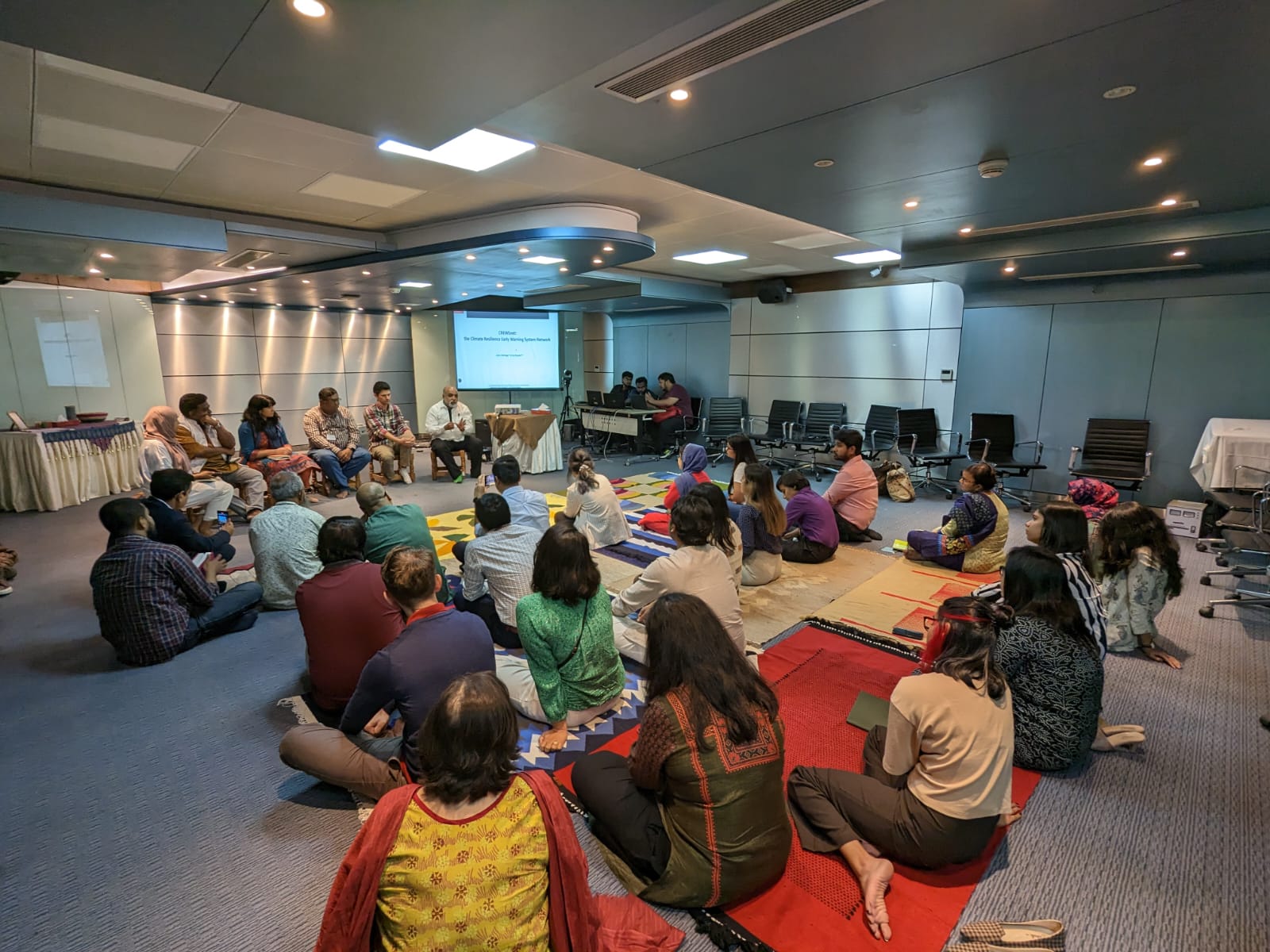For one of our most sought after addas, “BRAC x MIT: Innovations for Climate Adaptation!”, we were joined by BRAC’s very own Abu Sadat Moniruzzaman Khan, Myisha Ahmad, Tapas Ranjan Chakraborty as well as John Aldridgey and Sai Czander Ravela, from MIT.
We learnt that, as we explore Bangladesh’s beautiful waterways and mangrove forests, we will also have to delve into the impacts of sea-level rise, cyclones, floods, and the efforts taken to adapt to these adversities and build resilience.
When asked why they weren’t moving to Mongla or Dhaka if living in Kashempur was getting as difficult as was expressed, the beneficiary stood firm on wanting to stay home to try and adapt and live through it.
Because climate resilience has taught people to adapt in the best way they know how. That’s where the heart of CREWSnet’s work lies: How do we adapt to and thrive in the face of environmental challenges?
Imagine, driving down a road and suddenly hitting a bump that you didn’t see coming. Your first instinct is to slam on the brakes, but it’s too late – the damage has already been done. Now, what if you had seen that bump ahead of time? You could have slowed down, gone around it, or carefully navigated over it. This is exactly what CREWSnet is doing for communities around the world; creating an early warning system on the impacts of climate change for communities to adapt to
Climate adaptation doesn’t tell anyone where the next cyclone is going to hit. It highlights what the distribution of events could look like in the future that could be near or far. By giving an early warning, we give the critical heads up that allows vulnerable communities to plan interventions better and allows us to be able to gradually support the communities adapt.

And that is the very essential difference between the science of climate projection and the experience of climate change. Because communities know about and experience the impacts of climate change every day. It involves multiple factors that intersect and scale up to become more complex. Hence, an early warning can have huge benefits across the spectrum whether it’s educational or housing or shelters or agriculture or aquaculture.
However, along with the vulnerabilities, we face certain levels of risks. CREWSnet wants to think about the adaptation story beyond the present time. So, how do we put these problems together in a way that can connect the dots cognitively and informed by larger issues? Through the 6Is!
The 6i’s – information, intelligence, interpretation, intervention, improvement, and implementation – have revolutionised the way we approach problem-solving. As we continue to digitise and streamline these processes, we are not only better equipped to create solutions but also to train and inspire the next generation of innovators to make a meaningful impact in their communities.
Meanwhile, by bridging the gap between prototype development and implementation, MIT’s innovative technology in advanced projection, modelling, and interventions and BRAC’s interventions with real-world implementation, are not only created but also put into practice, making a real difference in the fight against climate change.
In a nutshell, the idea involves the merging of technology and connectivity to establish a system that caters to the needs of communities closer to being impacted by climate vulnerabilities who stand to benefit from it. This initiative need not be confined to a particular demographic or programme; rather, it can function as a discrete network of collaboration hubs that adjusts to changing circumstances.
